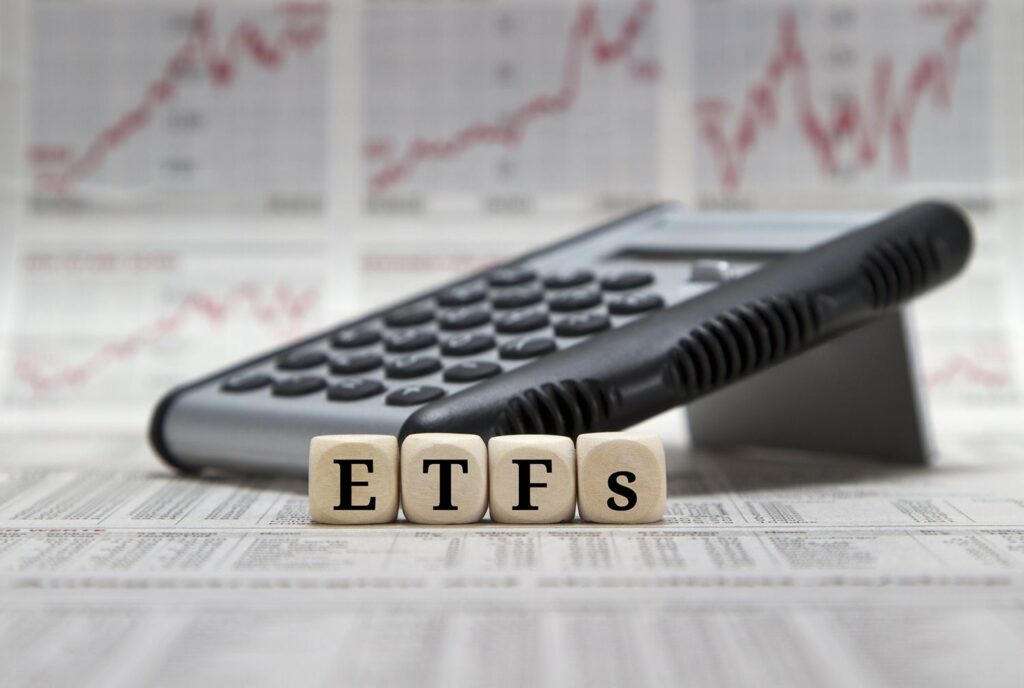Exchange traded funds, better known by the acronym ETFs, are a good way to gain exposure to several individual stocks without taking positions in any one of them on an individual basis. Unlike mutual funds, ETFs trade throughout the day, just like the underlying stock holdings.
So, while investing in an ETF is a good way to get broad exposure to stocks, bonds, or commodities without taking on specific risk, calculating performance may be a bit tricky.
Key Takeaways
- Exchange-traded funds (ETFs) hold a portfolio of stocks, much like a mutual fund, but trade throughout the day on stock exchanges.
- Despite this difference, ETFs are still valued based on their net asset value (NAV), which depends on the prices of the positions that it holds.
- While the market price of an ETF may deviate somewhat from the NAV, arbitrage tends to keep these deviations minimal, especially in more liquid ETFs.
Net Asset Value
Both mutual funds and ETFs calculate the net asset value (NAV) at 4 p.m. Eastern time each trading day. The NAV is the value of each share measured by the value of all the fund’s underlying holdings at their closing prices. However, because the ETF trades throughout the day, there are times when the NAV and the actual market price differ, although the differences tend to be minuscule.
Therefore, for calculation purposes, the most readily available measure to use is the NAV, but if you need to calculate more precise performance, then you can use the intraday or indicative net asset value (iNAV), if available.
One of the benefits of investing in an ETF is that it is often actively traded, which should compensate for the minimal dispersion between the actual bid/ask spreads and traded bid/ask spreads that make up the variance between market value and NAV.
Calculation
At any given moment, the market price of an ETF depends on the supply (selling) and demand (buying) in the market. However, the net asset value of the portfolio of stocks that the ETF represents matters, since if the market price rises or falls significantly from the NAV, then institutional investors will engage in creations and redemptions that arbitrage the price back closer to its NAV.
Therefore, we can make the assumption that the market price of a liquid ETF often will be very close, if not equal to, its NAV.
Let’s consider an example of an investment in a hypothetical ETF simply called “A.” Say the NAV of ETF A is $100 and you buy 50 shares for a total cost of $5,000 ($100×50). Three months later, the NAV is $115. Your 50 shares are now worth $5,750 ($115×50) for a profit of $750 ($5,750-$5,000); and the holding period return is ($5,750-$5,000)/$5,000=15%.
So how, then, is an ETF’s daily NAV computed? This value is taken from the most recent closing prices of the holdings of the ETF (on a weighted basis) plus any cash that it holds. Then, deduct any liabilities that the ETF may have on its balance sheet and divide that amount by the number of ETF shares outstanding.
NAV = (assets – liabilities)/ETF shares outstanding
The actual performance displayed on a brokerage statement for an ETF held in your portfolio may differ slightly from the calculation you make from the NAV because the market value may be marginally different than the NAV, as mentioned above. However, these variations should only be slight and minimally impact your total performance.
What Is an ETF’s NAV?
ETFs hold a portfolio of stocks. The value of this portfolio (plus any cash holdings and less any liabilities) is the NAV. On a per-share basis, you divide this figure by the number of ETF shares outstanding.
Why Do ETF Prices Remain Close to their NAV?
Because ETFs undergo a process of creations and redemptions, institutional investors and sophisticated traders will sell (redeem) ETFs and buy the basket of underlying stocks when the ETF price rises too high above the NAV, and they will do the opposite when the market price falls well below the NAV. This mechanism of ETF arbitrage tends to keep the price close to the NAV.
What Is an ETF’s iNAV?
iNAV, as mentioned above, stands for intraday or indicative NAV. It is imputed by some brokers on behalf of their clients to estimate the real-time value of an ETF’s portfolio of holdings, rather than relying on end-of-day closing NAV.
